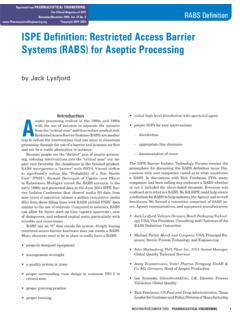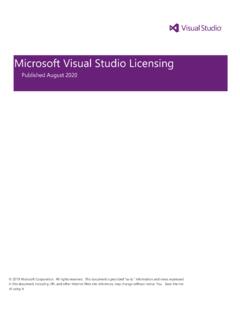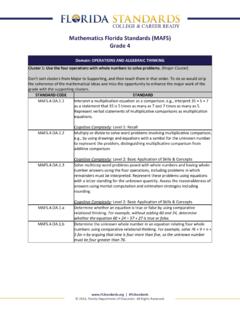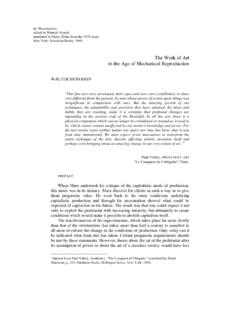Transcription of Visual Inspection of Medicinal Products for Parenteral Use
1 Version 1 (16) Good Practice Paper Visual Inspection of Medicinal Products for Parenteral Use Version (September 2014) Version 2 (16) Acknowledgement This ECA Good Practice Paper was developed by the Steering Committee oft he ECA Visual Inspection Working Group Authors Dr Tobias Posset (Roche Diagnostics) Dr Helmut Gaus (Boehringer Ingelheim) Dr Martin Dearden Dr Robert Eicher (Concept Heidelberg) Review Klaus Feuerhelm (GMP Inspector, Germany) Dr Bernd Renger (Immediate Past Chair of the European QP Association; Bernd Renger Consulting) Non-liability: While every effort has been made to assure the accuracy oft he content, Concept Heidelberg or the ECA Foundation cannot be held liable for any errors or omissions Version 3 (16) 1.
2 Scope This paper aims to highlight best practice for carrying out Visual Inspection of Medicinal Products for Parenteral use in the pharmaceutical industry. It should be seen as additional to and complimentary with the different Pharmacopoeias. Visual Inspection of Medicinal Products for Parenteral use should detect any readily identifiable visible container defect and ensure constant quality of the product in terms of absence of particular matter and/or turbidity, correct or uniform appearance of a lyo cake. Deviations from the herein proposed procedures and figures are possible any time.
3 But sticking to the proposed procedures and figures may lead to safer Inspection processes and less discussions in GMP inspections, as the described approach has shown its suitability during many years of industrial operation and GMP inspections. 2. Manual Inspection Workplace The premises where the manual Visual Inspection takes place should be suitable for carrying out this operation. Besides the common GMP requirements for manufacturing or quality control areas, of substantial importance for suitable inspections conditions are: Illumination: The intensity of the illumination at the Inspection point should have at least 2000 lux.
4 For Blow-Fill-Seal Products an illumination of lux is recommended. The total uncertainty of the lux-meter should be considered. The color reproduction n, using the CRI index, should have an RA value > 90% and not less then 80%. Version 4 (16) Illumination should be regularly qualified and part of the maintenance programme. An appropriate interval for checking the illumination is 6 months. It is recommended that a technical measurement be used to determine the light intensity on a prefixed point, which should be very close to the Inspection point of the operator.
5 The ambient illumination must not interfere with the illumination of the workplace and should be turned down during Inspection , if possible. Reflecting surfaces should be avoided. Ambient conditions: The ambient conditions are of enormous importance for carrying out this operation. Temperature should be ambient and should not exceed 25 C in the summer if not otherwise justified. The relative humidity and air velocity should be controlled and ensure comfortable working conditions. The noise level should therefore be below 55dB.
6 Personnel Personnel involved in the Visual Inspection should regularly undergo an eye test. The optometrist should focus on the ability to discriminate small differences in uniform structures, open/closed circles. Personnel carrying out the Visual Inspection must be qualified, comprising initial qualification and periodic requalification. Initial qualification should follow a predefined schedule, starting with the introduction of the new employees to training kits. These training kits should contain all kind of defects and must be updated constantly with new evolving defects out of production.
7 These Version 5 (16) training kits should be specific for the dosage form. Following the training via training sets there should be a side to side training with an experienced operator. The new employee should have the chance to ask questions and the experienced operator does perform in parallel a 100 % Inspection of the inspected species of the new operator. Following the initial side by side training the initial qualification should be performed with a qualification set. This set should focus on critical and major defects and also contain a limited number of minor defects.
8 The number specimen to be inspected should represent the number of objects which are inspected in the duration from one eye break to the other eye break. Acceptance criteria for the qualification should be predefined. In the initial qualification all critical defects and a predefined level for major defects should be found. Routine requalification must be performed at least every 12 months. After a second failure the operator must undergo a repeated eye test and a subsequent new qualification with the training kit and a subsequent new qualification via a qualification kit.
9 It is recommended to do the Requalification under worst case conditions, which is at the end of a shift instead of at the start of a working day. Version 6 (16) Operation Each object should be inspected for at least 5 seconds against a white background and an additional 5 seconds against a black background. Times may be shorter when using a semi-automatic system. The objects should be slightly twisted or slowly rotated whereby formation of air bubbles will be avoided. The post Inspection recovery time for the employees carrying out the Visual Inspection is of essential importance.
10 The maximum time for continuous Inspection activity between break periods and the total maximum Inspection time for a shift/workday must be limited. A good practice is 20 minutes of Inspection , followed by a break of at least 5 minutes for a total maximum duration of not longer than 4 hours. Uninterrupted Inspection activity should not exceed 40 minutes. 3. Automated Inspection Qualification / Validation The central element of qualification/validation of a fully automated Inspection system should be the verification that the automated system is at least as good as human inspector (without magnification) with regards to failure detection rates.





